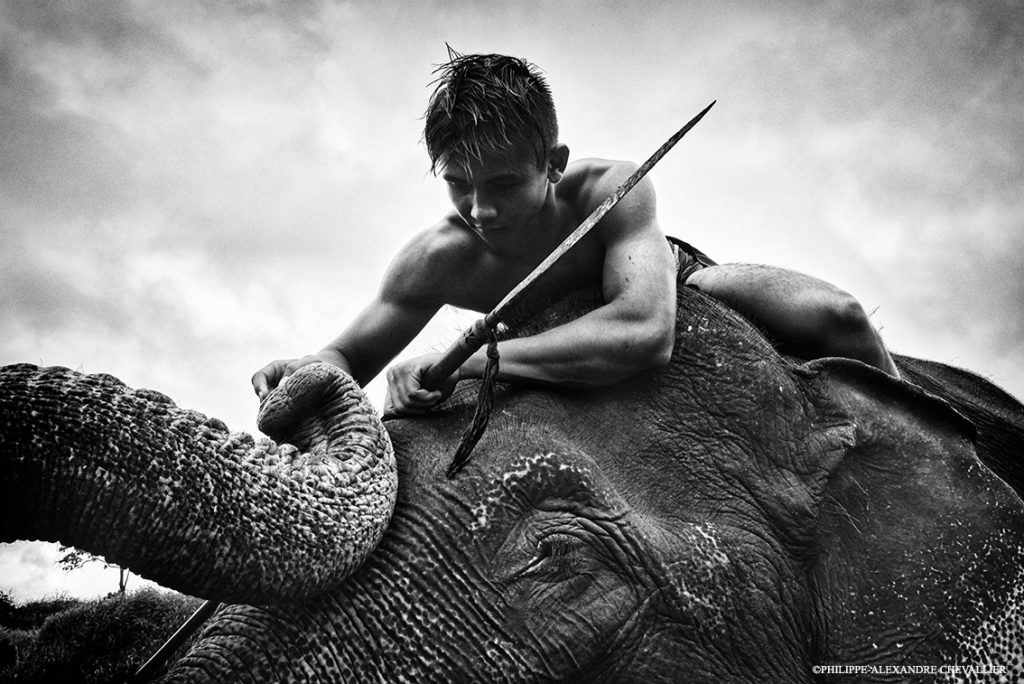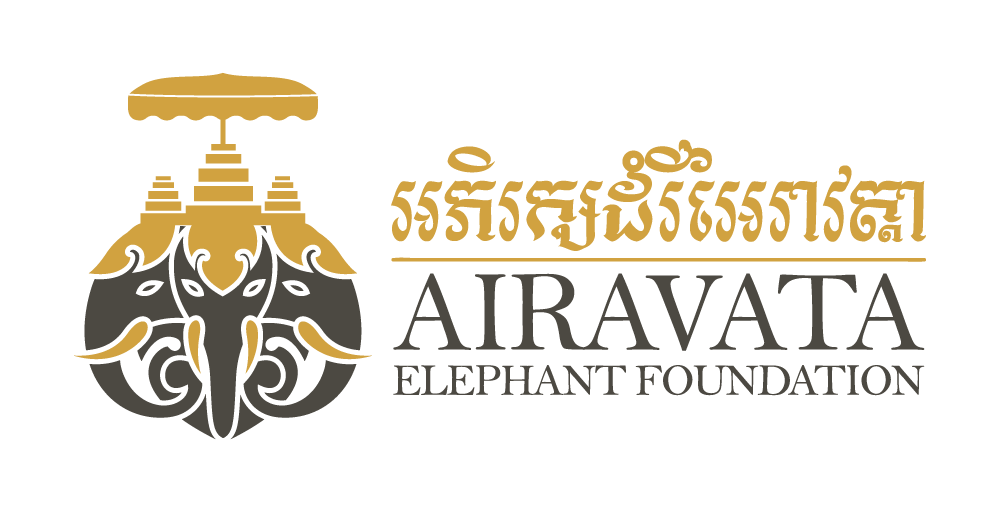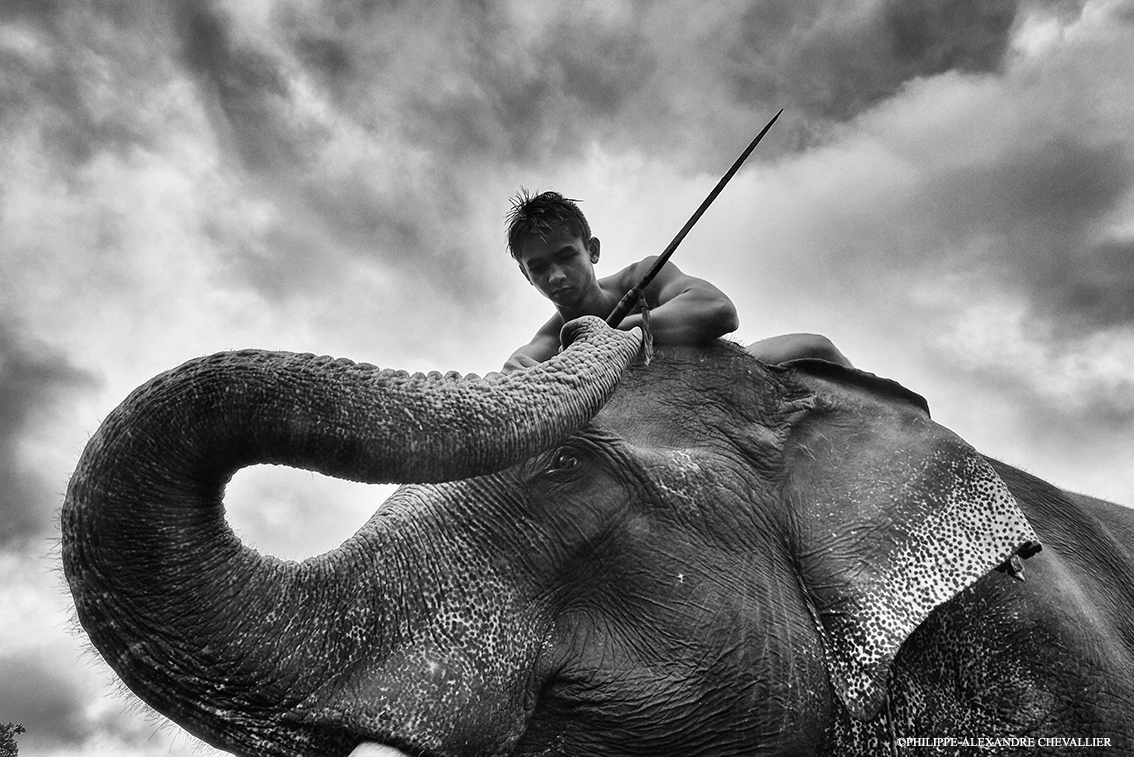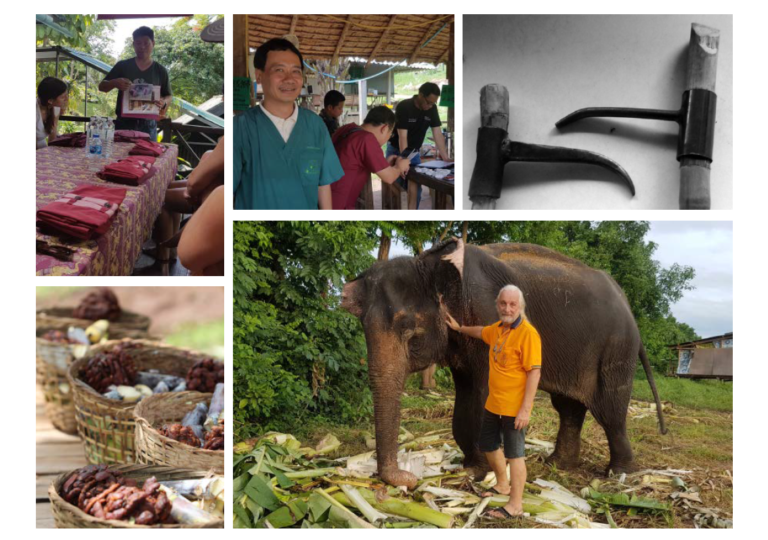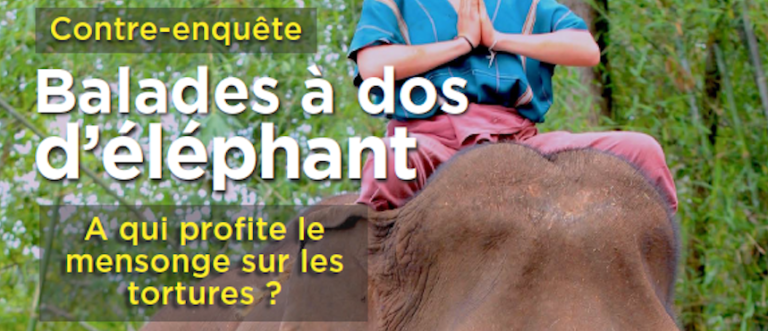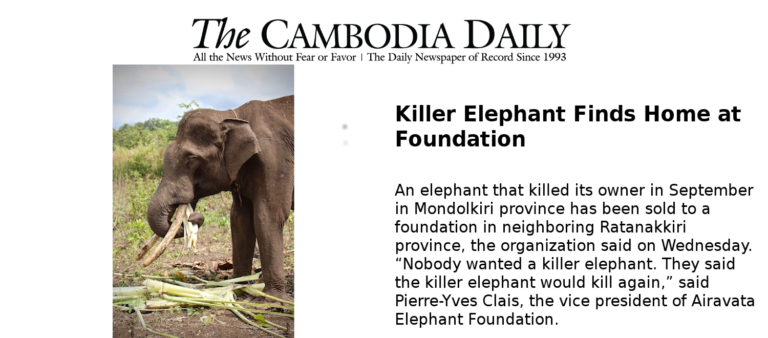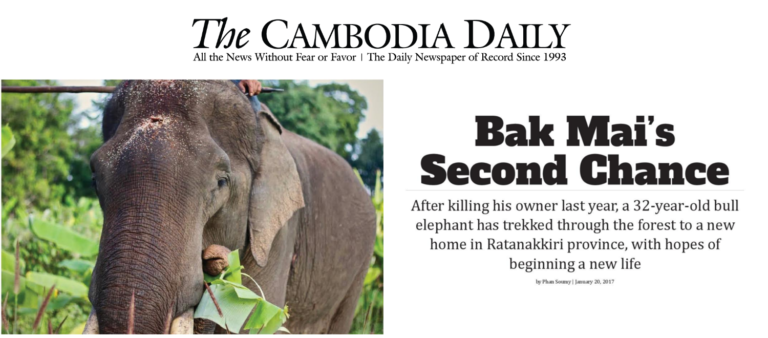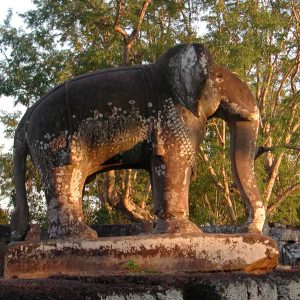ETHICAL ELEPHANT RIDING FACTS
Facts from the ACEWG, a group of regional elephant specialists, veterinarians, researchers, and conservationists.
In these ethical elephant riding facts below, you will understand how the ACEWG recognizes the urgency to address the current situation of elephants in tourism in South East Asia proactively and with sound scientific knowledge, to create more awareness about both the problems and the possible solutions, and to provide recommendations to improve health care and management practices for elephants.
How much weight can an elephant carry on its back?
Studies have not been done on elephants; however, in horses, dogs and donkeys, the weight carrying capacity is about 20-25% of their body weight, which equates to over 600 kg for an average sized elephant weighing about 3,000 kg. Furthermore, the front and rear long bones of elephants are particularly strong because they do not have a bone marrow cavity, but instead have a dense bone structure. This means they can bear more weight than many other mammals.
Elephant saddles should be properly cushioned and not apply pressure to the spine. If the working hours are limited and the terrain is suitable, two people in a saddle (less than 10% of the elephant’s body weight) will not be an undue stressor for an elephant. The weight of one or two people without a saddle (less than 4% of body weight) would hardly be noticed.
How much do elephants need to walk/exercise every day?
The amount of walking a wild elephant does each day depends on the quality of their habitat. Asian elephants can walk 3-20 km a day in search of food and water. A herd of elephants may walk seasonally in an extended loop, looking for fresh resources within a home range that can be anywhere from 30 – 300 km. The better the habitat quality, the less elephants will walk.
Elephants in captivity usually are provided with adequate food and water, and may not walk much if they do not have to. Thus, it is important they be provided ways to exercise, such as having a large yard, being walked several km daily on soft ground, or participating in trekking or other activities. Daily exercise is important for skeletal, digestive, foot and joint health, and to avoid obesity. Exercise is also an important form of enrichment for captive elephants, alleviating boredom, reducing aggression, and thus improving the welfare of the animal.
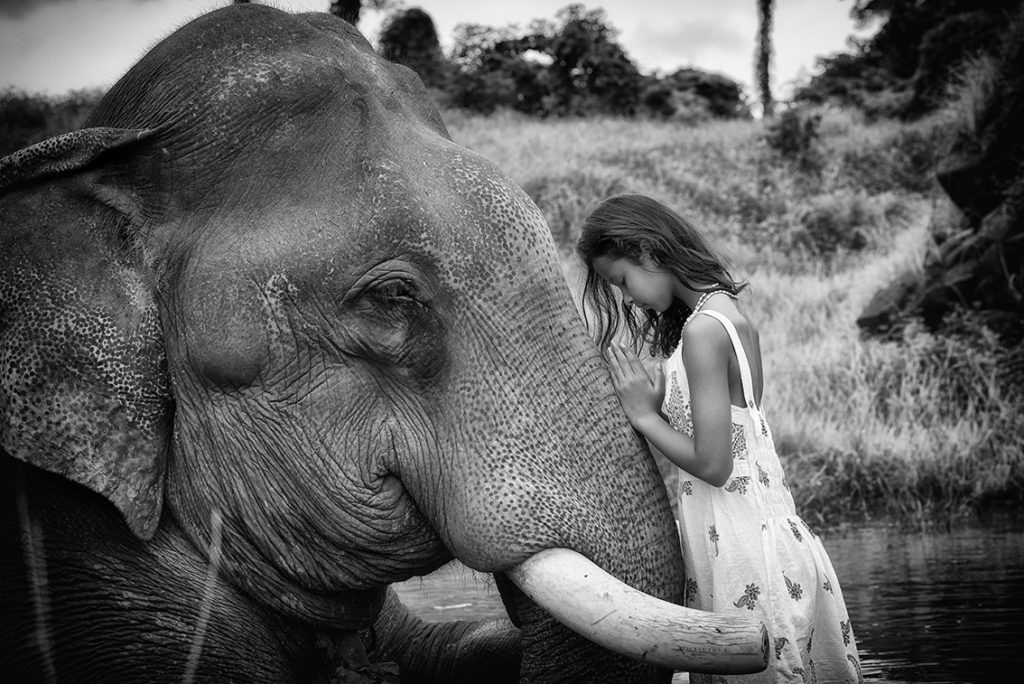
Do elephants like to interact and be close to people?
In captivity, most elephants have become accustomed to people and have learned that people bring rewards, such as food treats; even some wild elephants will interact with people in return for kindness or food, though this can be very dangerous. Some elephants seem to enjoy being part of a social group, even if that group includes humans. Other elephants are wary of people. All elephants should be approached with caution and never without the mahout present.
How do you know if an elephant is happy?
It is difficult to determine if animals are truly ‘happy’ or ‘sad’, as their emotional states are not exactly like those of humans. Even for humans, the concept of happiness is very subjective and not easy to define. Still, there are certain behaviors that display a state of emotion that can be related to happiness. For example, the display of exploratory or playful behaviors is a good sign that an elephant has good welfare.
Happy elephants are probably best observed when kept in compatible social groups. Look for elephants that touch and comfort each other, check out what each other is eating, play during bath time, care for their calves, and vocalize a variety of greetings; these are examples of contented elephants. A good venue will give elephants ample opportunity to exhibit these behaviors.
Why do we have elephants in captivity/where do captive elephants come from?
Asian elephants have had a relationship with humans for some 4,000 years. Historically, elephants were used as beasts of burden, for logging, as war mounts, ceremonial animals or simply kept as a status symbol. These elephants were mostly captured as wild animals by professional elephant catchers who then trained and either kept them or traded them to others (individuals or companies) for a specific use.
It is now illegal to capture Asian elephants from the wild outside exceptional conditions and with Government sanction. As a result, when possible, elephants are now being bred in captivity to maintain captive populations.
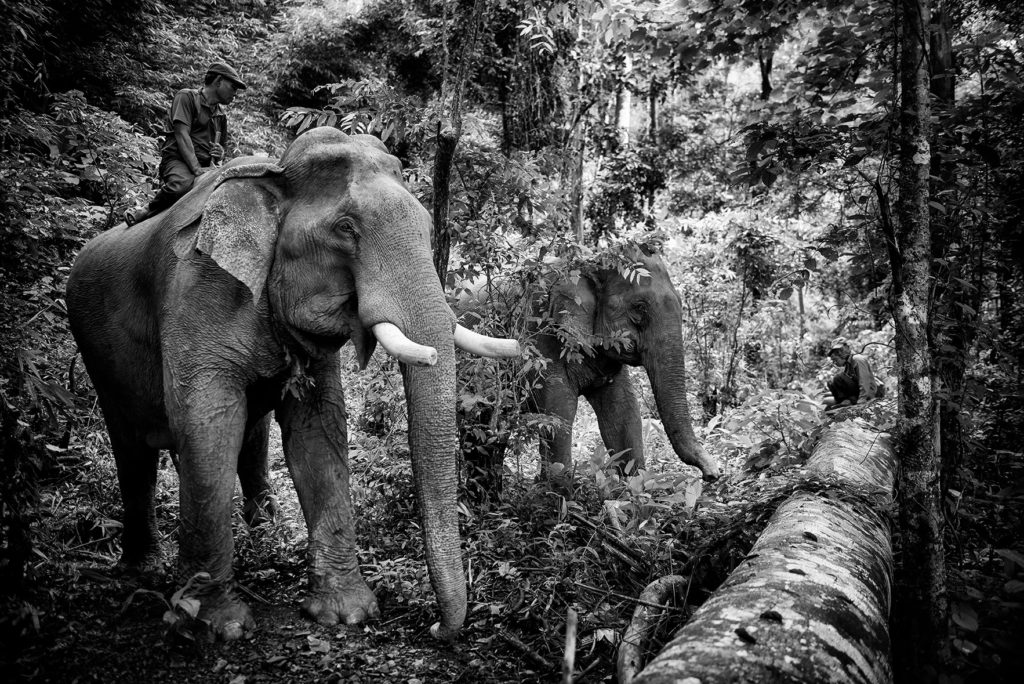
What does and what does not constitute a sanctuary?
The formal definition of “sanctuary” is “a tract of land where wildlife can breed and take refuge” and the current idea behind an elephant “sanctuary” is a facility allowing elephants to roam free in a protected space with minimal control by humans. This approach only works if sufficient space with appropriate habitat, adequate shelter and sufficient forage are provided (elephants consume up to 250 kg food/day), and if the elephants are socially compatible. Too often, uncontrolled elephants in a limited space will kill or injure other elephants, as well as people (e.g. tourists, mahouts).
The term “sanctuary” is often misapplied to, or by, some captive elephant facilities in an effort to differentiate them from other facilities with alternative management styles. At present, no tourism-funded elephant facility in SE Asia meets all the requirements that define a true sanctuary.
A full understanding of the limitations of elephant care and welfare, as well as different elephants’ individual needs in any facility is needed before any such designation can or should be applied. Elephants managed in a sanctuary are not truly wild, as they need to be controlled by humans to some extent. Facilities that prohibit the use of management tools such as the hook, but allow free contact with the elephants put mahouts and visitors at risk as they have limited ability to control an elephant when needed. As a result, sanctuary elephants are often overweight because high calorie treats (bananas and other fruits such as sugar cane) are used to control them. Because of a lack of adequate training, elephant health problems can occur due to an inability to administer veterinary treatments or adequate foot care. Thus, it can be difficult to adequately provide for elephants in a small space where human interaction is limited.
Is performing and doing tricks bad for elephants?
Elephants performances, if done properly using positive training techniques, are not bad for elephants. Ethical, well managed, and properly scripted animal presentations can have benefits to the animal’s health, as they provide a form of exercise and mental stimulation. Some activities can be used to demonstrate strength (e.g., moving logs, lifting up their mahouts) and agility (e.g., painting, kicking balls), whereas others provide a platform for education that can disseminate important conservation messages.
Many elephants readily participate in these activities because they are rewarded with favored foods and attention. However, some activities should not be allowed (i.e., walking on hind legs, sitting upright, or riding a bicycle). They are not only unnatural behaviors, but can negatively affect the elephant’s well-being and physical health. A good venue should determine what activities are best suited for each individual elephant. If the elephant looks healthy, is guided using positive methods, and proper, scientifically accurate, education messages are provided, a show can be an acceptable and beneficial component of a captive elephant facility.
What is the bullhook and why is it needed?
The training tool called the hook (also called a guide, bullhook, goad, or ankus) is used to guide an elephant. It consists of a stick with a curved hook at the end. In a free contact environment when humans are in close and unrestricted contact with elephants, the hook is used to guide and cue the elephant with the purpose of ensuring the safety of both humans and elephants. In a free contact situation, where elephants and humans share the same space, a hook should be carried at all times for safety.
It is the tool developed over thousands of years to allow a mahout to get an elephant’s attention in an emergency (e.g. sudden loud noises or when elephants fight) or harmful situation (e.g., potential ingestion of chemical poisons, snakes, plastic litter, fallen electric wires, etc.). If, for any reason, an elephant panics, this tool can be used to more safely control it. Although many elephants can be guided effectively by the use of other cues, it is simply too dangerous to not have a hook present and at hand in case of emergency.
Not carrying a hook is dangerous for both elephant and any people around it. Likewise, using an inappropriate tool, like a machete (knife) or spear, to bring an elephant under control can be dangerous and cause harm to the elephant. Some mahouts carry nails in their pockets, which is completely inadequate for controlling an elephant, but allows them to give the impression they are using voice alone, which is deceptive. The advantage of the hook is that it extends the reach of the arm to allow a safer way for the mahout to signal a command to his elephant. The hooked end also permits easy positioning of a body part (e.g., leg, trunk, foot) for health checks or medical procedures.
As with all tools, however, the hook can be misused or used purely for punishment, which is not its intended use. The way to ensure the proper use of the hook is to educate and train mahouts properly so that they are capable and confident in their ability to safely handle an elephant. Any instances of mahouts improperly using the hook should be reported to venue managers, including asking how such behavior is dealt with.
Why do some elephants look as though they are dancing?
That behavior is known as stereotypy, which develops in response to conditions that restrict normal behaviors. They are repetitive movements that serve no obvious function and occur in animals subjected to barren environments, scheduled or restricted feedings, social deprivation or in response to frustration.
It is common for elephants on short chains to develop a number of stereotypic behaviors, like swaying, rocking and trunk swinging. Once a stereotypy becomes established, it can be difficult to stop. It becomes a habit, so an elephant may exhibit these behaviors even after the condition that caused it to develop has been eliminated. So, if you see an elephant ‘dancing’ it may not be currently stressed. However, such repeated actions can be physically harmful to feet and joints, so some form of enrichment should be given that will allow the elephant to manifest other types of more normal behavior. If you see an elephant exhibiting stereotypies, ask the manager of the venue what is being done to alleviate this behavior.
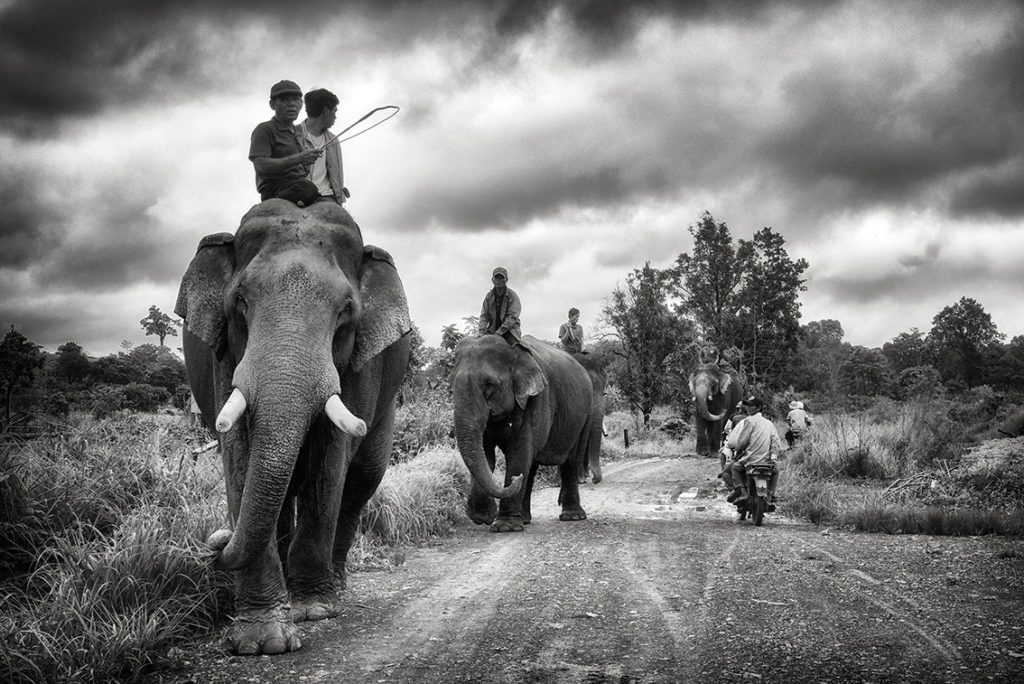
What are some of the main health issues for elephants?
Common health problems of elephants are often linked to poor husbandry. Injuries from poorly fitting saddles, pressure sores, arthritis, foot problems (abscesses, nail cracks, pad problems) and wounds from the overuse or incorrect use of the hook are clear indicators of poor management. Other problems can arise from poor nutrition, with elephants being either overweight (from eating too many treats like sugar cane and bananas) or underweight (not enough food, or food of poor quality). In venues with little shade or dusty conditions, eye problems can become serious.
Other problems are caused by untreated and heavy parasite infections. There are also a number of infectious diseases, such as foot and mouth disease, pox virus, tuberculosis, and the elephant endotheliotropic herpes virus (EEHV), and noninfectious diseases, like chronic foot lesions and arthritis, that if left untreated can be fatal.
How big do elephants grow?
They are the largest land mammals on earth. Their height at the top of their back may be 2.3–3 meters (7.5–9.8 ft) and their length 5.5–6.4 meters (18–21 ft). The weight of adult elephants ranges from 2,500 to 5,000 kilograms (2.6–5.5 tons).
The elephant’s skeleton has evolved to bear its tremendous mass and equals about 16.5% of its total weight. In a 5,000-kilogram (5.5 ton) adult elephant, the skeleton alone may weigh 835 kilogram (1,800 lb).
Their entire vertebral column from skull to tail contains 60 to 70 individual vertebrae. Like all mammals, elephants have seven in the neck, but they are semi-flat, fused discs able to handle the heavy load of their head and tusks. Since the head is so huge, powerful muscles along the neck are necessary to help keep it upright. Similar to bird bones, the skull has a plethora of tiny air pockets to reduce weight.
How much does an elephant eat per day?
Depending on their size, an Asian elephant can consume up to 300 kilograms per day (660 lb) or about 18% of their body weight.
What kind of food do they eat?
An elephant’s diet is completely vegetarian: grasses, small plants, bushes, fruit, twigs, tree bark, and roots. Bamboo shoots, seedlings and leaves are the favorite food of many elephants. Each day they may spend 16 to 18 hours feeding.
How many times do they poop?
Elephants defecate 10–20 times per day, producing 100–150 kilograms of dung (220–330 lb).
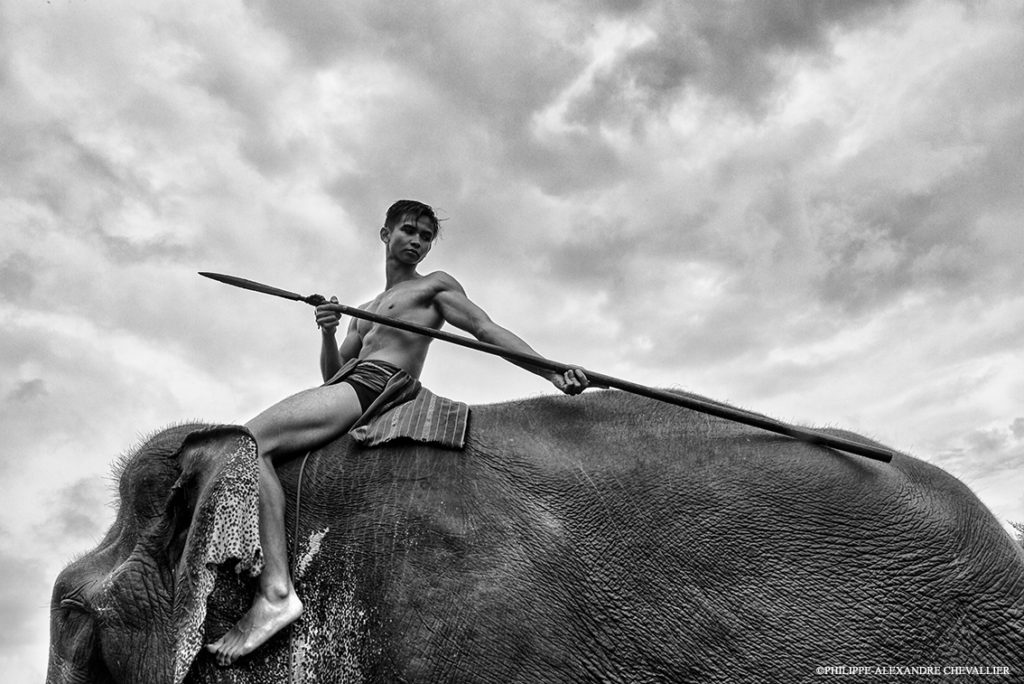
How much water do they drink?
The hotter the day, the more they drink. An elephant may drink 160–200 liters (42–53 gal) of water per day, which produces about 50 liters (13 gal) of urine, depending on its size and the ambient temperature. Its trunk can hold about 10 liters (2.6 gal) at one time.
Do they drink with their trunks?
The elephant’s trunk is a “universal organ” with incredible abilities that seem like magic more than science. It’s a nose, hand, radar, and snorkel all in one. No bones, only muscles, nerves, blood vessels, tissue and skin.
What’s the main function of the trunk?
The tip is equipped with one or two lobes, which serve as “fingers”. Elephants can graze, hold food, and chew at the same time. They snatch up a bunch of grass, curl their trunk around it to form a bundle, smack it against their legs or chest to remove dirt, and take in a mouthful.
What is the geographic range of the Asian elephant?
South and Southeast Asia: India, Sri Lanka, Nepal, Bangladesh, Bhutan, Myanmar, Laos, China, Thailand, Andaman Islands, Vietnam, Cambodia, Malaysia (Peninsular, Sabah, and Kalimantan) and Indonesia (Sumatra, Borneo).
Do elephants talk to each other?
Body language using their heads, ears tail, and especially their trunks is their natural language. They do make low rumbles and roars to warn other elephants at long distances and high sounds such as trumpeting, barking, and snorting for communication at close range.
How long do they live?
40 to 65 years, though statistics vary on the lifespan of elephants. Life expectancy depends on heredity, environment, and the quality of care received. Circus elephants are known to live longer because of the quality of care they receive. The Guinness Book of World Records pegs the oldest elephant living until age 84.
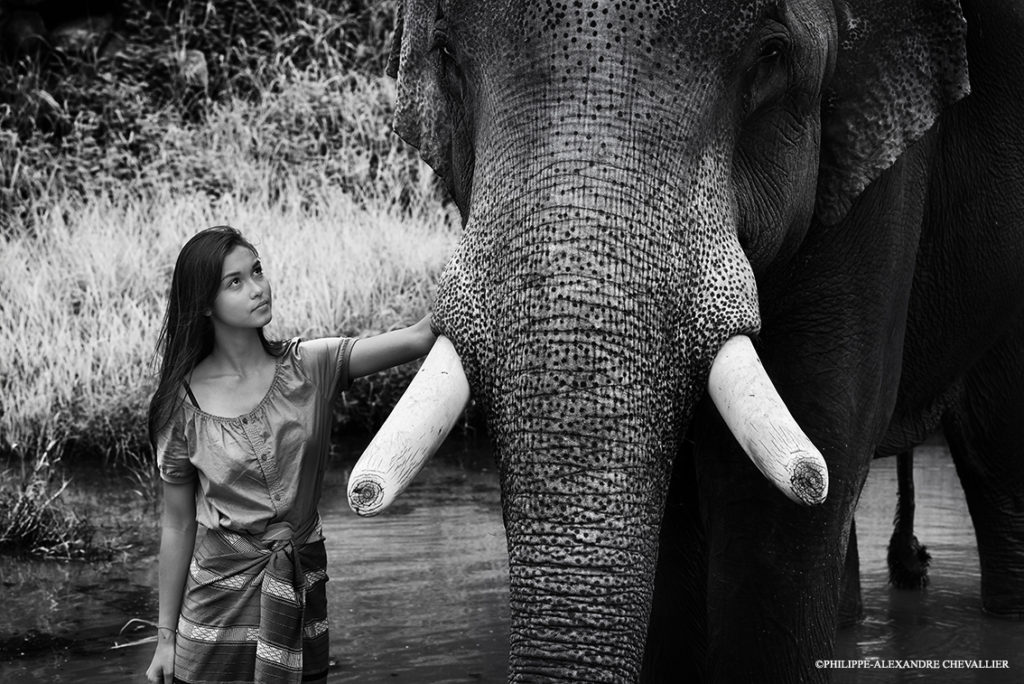
When do females start to have babies?
Elephants reach maturity between the ages of seven and twelve years. Females normally bear their first calf when they are 10–20 years old. Gestation periods are more than twice that of a human mother: 21–22 months.
How long before baby elephants can walk?
Within an hour of their birth, they can stand and soon after, swim. A baby elephant drinks milk from its mother’s two breasts for four to six years, until mom bears her next young.
How are elephants trained? What is the Phajaan training?
In Northern Thailand, “Phajaan” is in fact not a training method at all, but a spiritual ceremony associated with the training; similar ceremonies known by other names are performed throughout SE Asia. It is carried out before training to ask the spirits to protect the people and the elephant. This ceremony is an important cultural tradition and is performed before most elephants are trained no matter what training technique is used.
Today, captive born elephants grow up with and around humans and often begin their training soon after birth. Attitudes are changing and more owners are recognizing the benefits of using more humane and ethical training methods. Every captive elephant must have some training to allow it to understand common verbal commands and to accept veterinary treatment. To not train an elephant under human care would be irresponsible. In the days of wild capture, the elephant was often tamed using very harsh techniques, as this wild creature had no previous experience with humans.
Old videos labelled as “Phajaan training” can be found on the internet and show cruel training methods using a crush to confine the animal and ‘break its spirit’. But such methods are thankfully much less common today. Tourists should ask venue personnel how they train their baby elephants and pick venues that understand positive reinforcement and use it from an early age.
Should all elephants be free? Can captive elephants be reintroduced into the wild?
In an ideal world, all elephants would be free in nature. However, due to human population increases and habitat destruction, the reality is there is not enough appropriate habitat to support current wild populations of Asian elephants, let alone reintroduce the existing population (upwards of 15,000 in Asia) of captive elephants. Furthermore, it is a complex process to reintroduce captive elephants back into the wild.
In addition to lack of habitat, released captive born elephants can increase human elephant conflict as they are used to interacting with and are not afraid of humans. Additionally, captive elephants may carry diseases that, if contact is allowed, can potentially spread to wild populations. Captive elephants can serve as a means of maintaining important populations as “insurance” against environmental or human-caused changes. Up close and personal contact with captive elephants, especially when accompanied by educational materials, also can help inspire the public to care for elephants and their habitats.
Are elephants endangered?
The IUCN Red List, the international standard for categorizing species, has listed African elephants (Loxodonta africana) as vulnerable (likely to become endangered) and Asian elephants (Elephas maximus) as endangered (likely to become extinct). There are approximately 450,000 elephants free-ranging in 37 countries in Africa, but less than 50,000 remaining Asian elephants in 13 range countries, of which approximately 60% are in India. If we can protect existing forests, and in some places, reconnect it, some wild elephant populations are still large enough to sustain themselves.
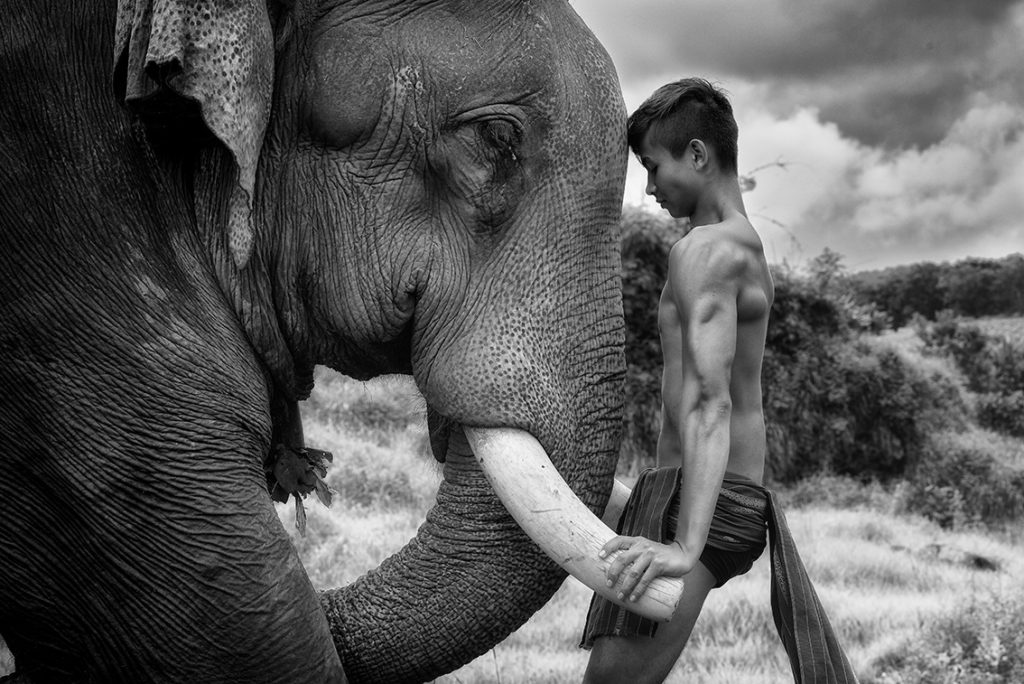
What can I do to support good elephant welfare in SE Asia?
Ideally, choose a venue that has been certified by the local government (e.g. Ministry of Environment of Cambodia), or has the right policies and procedures in place, and has sufficient natural habitat to care for its elephants. Don’t be afraid to ask questions of the staff if you are unsure. A good venue will be happy to answer your questions.
Book your elephant experience directly with the venue or through an agent that you trust or one that has personally audited and can vouch for that camp (if this is the case they will have documentation from their visit). If you book a package tour that includes elephants, find out if it is a good venue, otherwise you may be unwittingly taken to a venue with bad elephant welfare. Boycotting elephant tourism is not the answer. This approach can undermine venues that are behaving responsibly and provide good welfare to their mahouts and elephants.
Who or what is ACEWG?
As mentioned above, ACEWG or Asian Captive Elephant Working Group, is a group of regional elephant specialists, veterinarians, researchers, and conservationists. Here is a list of some of the realities and issue from their official statement on their website at http://www.acewg.org The ACEWG Acknowledges:
- Closing all elephant tourism venues is not a realistic option for a variety of reasons, including the lack of alternative livelihoods for both people and elephants. Releasing captive elephants back into the wild should be explored but is currently not a realistic option for a large majority of captive elephants due to a lack of suitable habitat within elephant range countries, the high levels of human-elephant conflict (HEC) across Asia, and the risks – real or perceived – that releases will result in increased HEC.
- There are a variety of opportunities or uses for elephants in tourism facilities including, but not limited to activities such as riding, bathing, interaction with tourists, shows, mahout experiences, and zoo style viewing of elephants in a landscaped area. In addition, these facilities have the potential to provide favorable conditions for studying and offering education about elephants.
- The relationship between humans and elephants has existed for thousands of years. The elephant tourism industry provides an opportunity to maintain the knowledge and historic cultural value of elephants in ASEAN range countries and showcases the deep human-elephant bond that encourages an understanding and appreciation for elephants.
- With limited possibilities for raising the significant income required for elephant food and care, an increasing number of captive elephants now depend on employment in the tourism industry.
- Elephants are intelligent and mobile animals with a highly developed social structure. They have complex needs and in captivity require professional management and care protocols.
- Elephants have the capacity to be fatally dangerous to humans and other elephants in both captive and wild situations and must be managed accordingly.
- The use of elephants in tourist camps has raised global concerns and public debate. It is evident that although there are no simple solutions, more research is required to scientifically guide the development of protocols to appropriately address welfare concerns and to further improve management systems.
